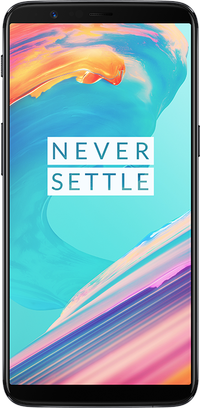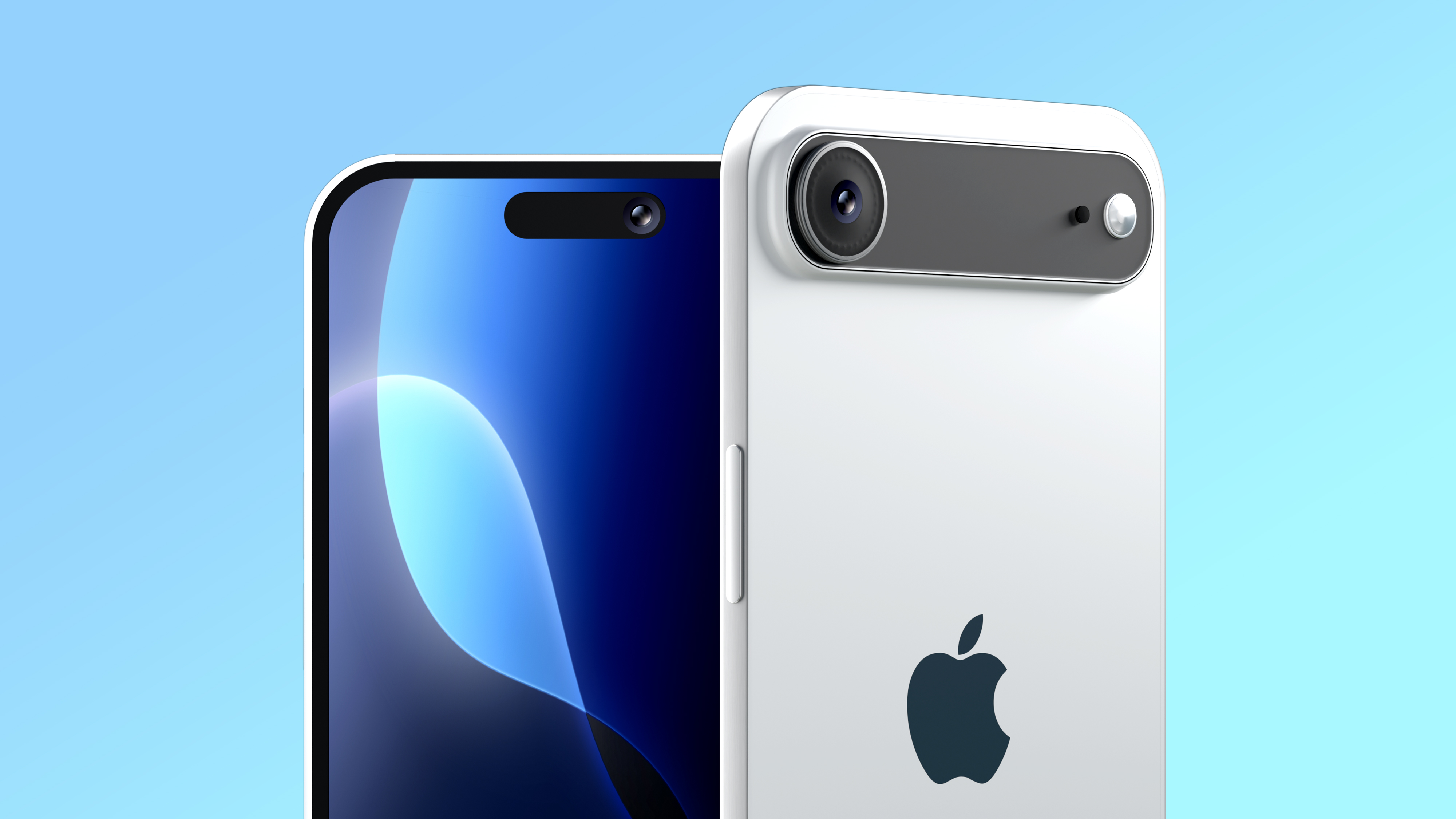OnePlus 5T vs. Essential Phone: Battle of the $500 Flagships
The OnePlus 5T and Essential Phone promise flagship specs at fractions of the price of topflight smartphones. Here's how the two compare.
Update 12/26: We've added the results from our video transcoding test using the Adobe Premiere Clip app.
If a no-compromise flagship smartphone is what you want, $500 may not seem like enough. The latest iPhone, Pixel and Galaxy S models all ask for at least $700. And that's before you consider titans like the Galaxy Note 8 and iPhone X, which start at $950 and $1,000, respectively.
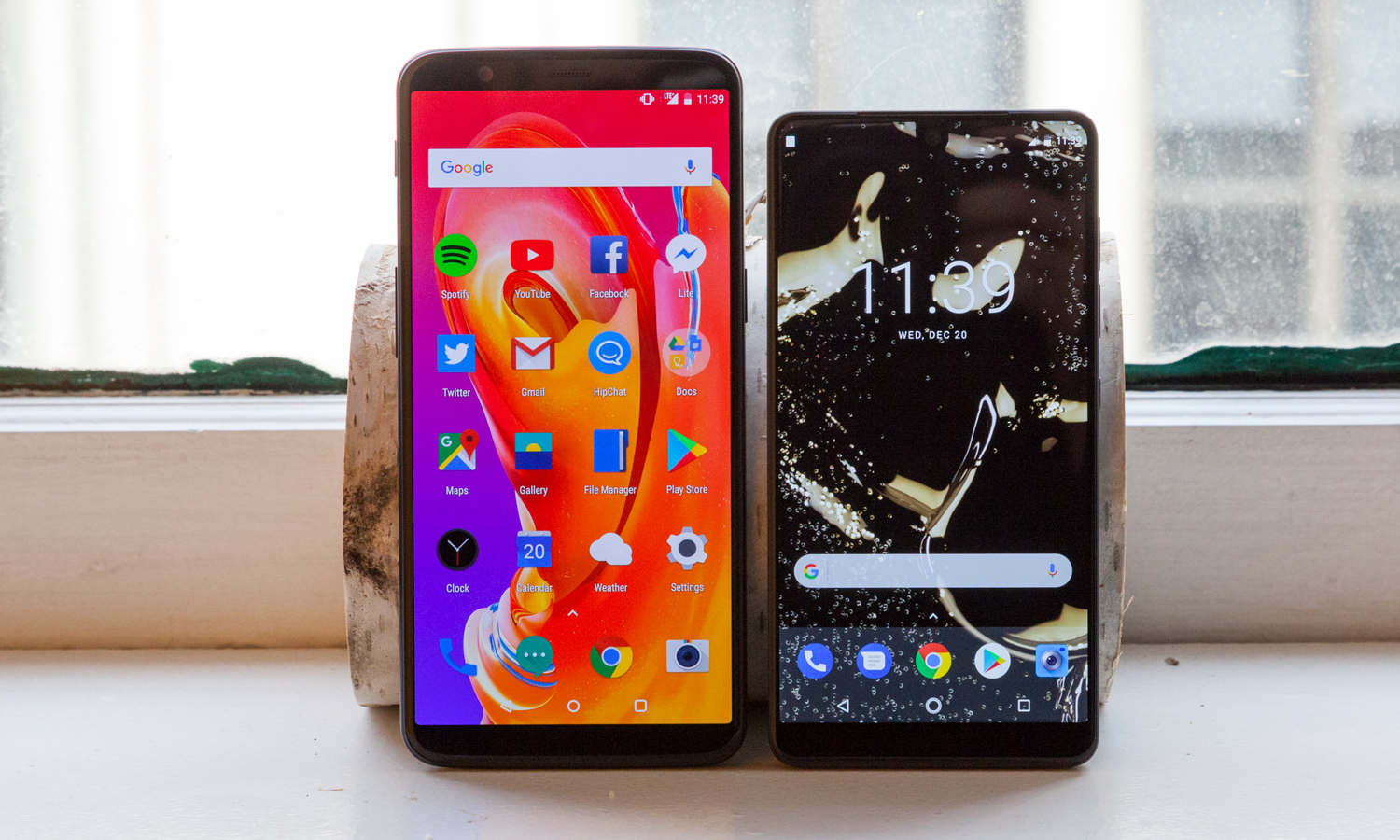
Fortunately, these days, you can save a lot and still get top-tier performance, thanks to a pair of rather unique Android handsets: the Essential Phone and OnePlus 5T. Both feature high-end Snapdragon 835 processors; both have expansive 18:9 displays with minimal bezels, and both now run just $500. In this comparison, we'll hash out the differences between the two devices and determine which phone deserves your dollars.
Specs
| Row 0 - Cell 0 | Essential Phone | OnePlus 5T |
| Price | $499 | $499/$549 |
| OS | Android 7.1.1 Nougat | Android 7.1.1 Nougat with OxygenOS |
| Screen Size, Resolution | 5.71-inch, 2560 x 1312 LCD | 6-inch, 2160 x 1080 AMOLED |
| CPU | Qualcomm Snapdragon 835 | Qualcomm Snapdragon 835 |
| RAM | 4GB | 6GB/8GB |
| Storage | 128GB | 64GB/128GB |
| microSD Slot | No | No |
| Rear Camera | Dual 13 MP (f/1.9) | Dual 16 MP (f/1.7) and 20 MP (f/1.7) |
| Front Camera | 8 MP (f/2.2) | 16 MP (f/2.0) |
| Battery Life (Hrs:Min) | 8:09 | 11:22 |
| Water Resistance | No | No |
| Size | 5.6 x 2.8 x 0.3 inches | 6.1 x 2.9 x 0.3 inches |
| Weight | 6.5 ounces | 5.7 ounces |
Design
These devices couldn't look more different, but they're also some of the best-designed smartphones to arrive in 2017. The OnePlus 5T opts for a more conventional approach that doesn't take too many risks, but it still achieves a premium aesthetic and build quality. Meanwhile, the Essential is perhaps the year's most iconic-looking handset this side of the iPhone X.
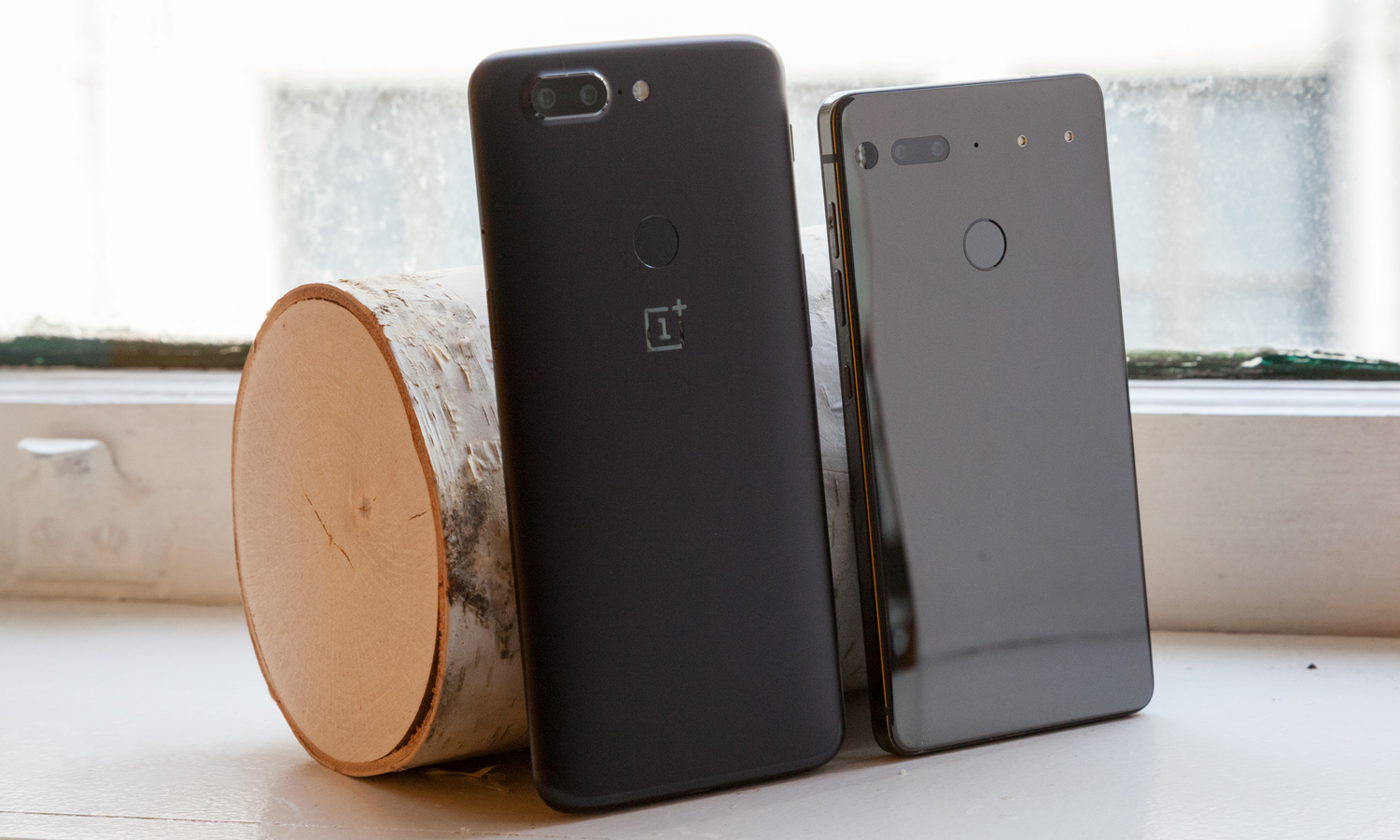
That's not to say the two phones don't have their faults. Neither is water-resistant, and neither features a microSD card slot. The Essential Phone is squatter than the OnePlus 5T, which helps with reachability, but the Essential's heavier, slab-like form factor makes it harder to grip. On the other hand, the 5T looks rather uninspired alongside the other full-screen flagships we've seen this year.
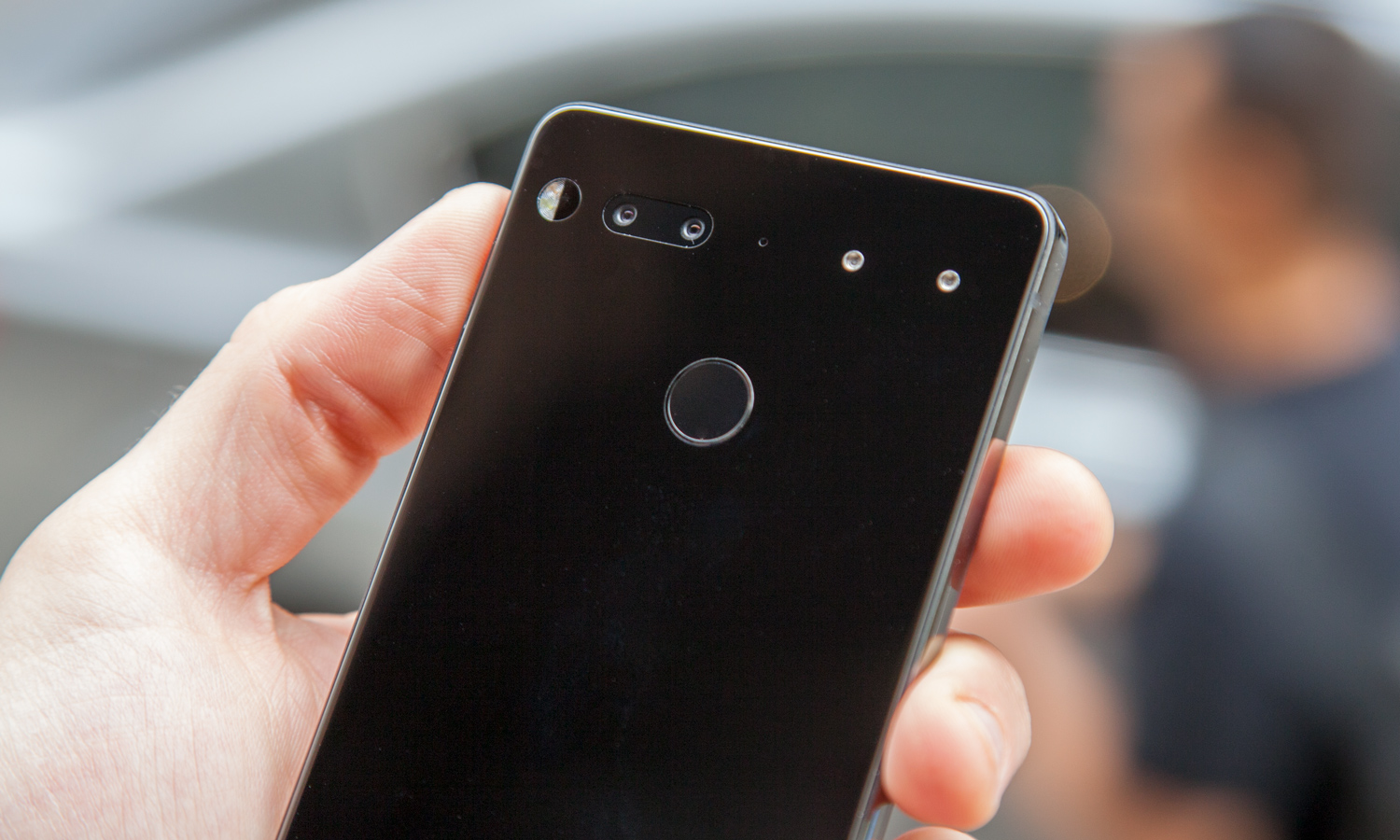
Still, we've got to give the win to the Essential Phone. The startup's first handset is a minimalist symphony of titanium, ceramic and glass that arguably outclasses all its Android rivals in a beauty contest — so long as you can put up with that notch. The Black Moon colorway in particular is remarkably stealthy and sinister, with its shimmering, almost mirror-like rear panel that contrasts nicely with the matte-black material used for the antenna.
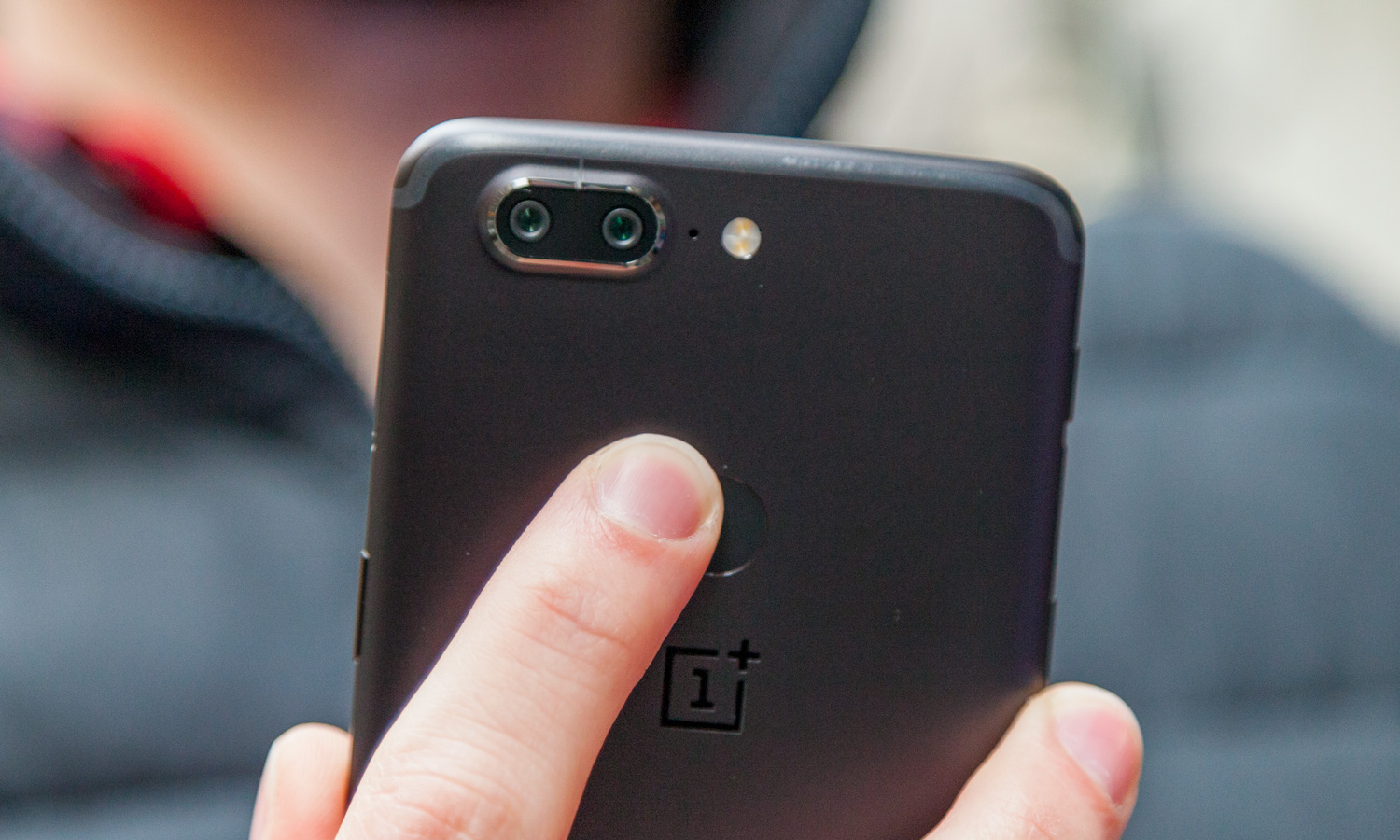
The aluminum-clad OnePlus 5T looks just fine by comparison, and the inclusion of a 3.5-millimeter headphone jack isn't lost on us. Still, it's nothing we haven't seen before.
Winner: Essential Phone
Display
With the Essential Phone's front-facing camera jutting in from the device's top edge and the irregularly shaped corners that feature a wider radius at the top compared to the bottom, you'd assume there is something special about the Essential Phone's 18:9, 2560 x 1312 screen.
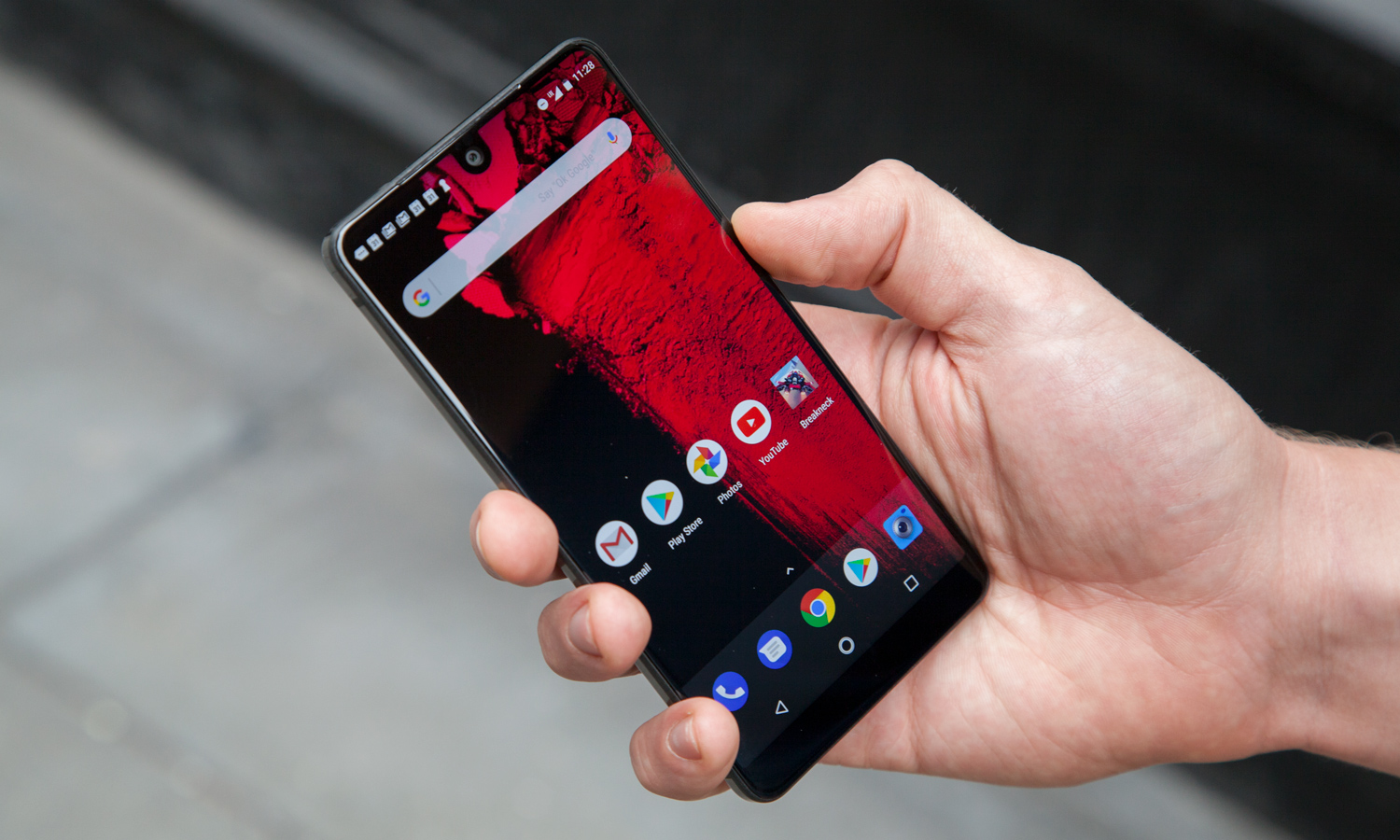
Sadly, there isn't. Essential made the curious choice to go with an LCD panel in its first phone, rather than an OLED one as found on the OnePlus 5T. Although LCD displays have the edge in brightness, they can't match OLED's greater range of colors, true blacks and immersive contrast, which our testing demonstrated.
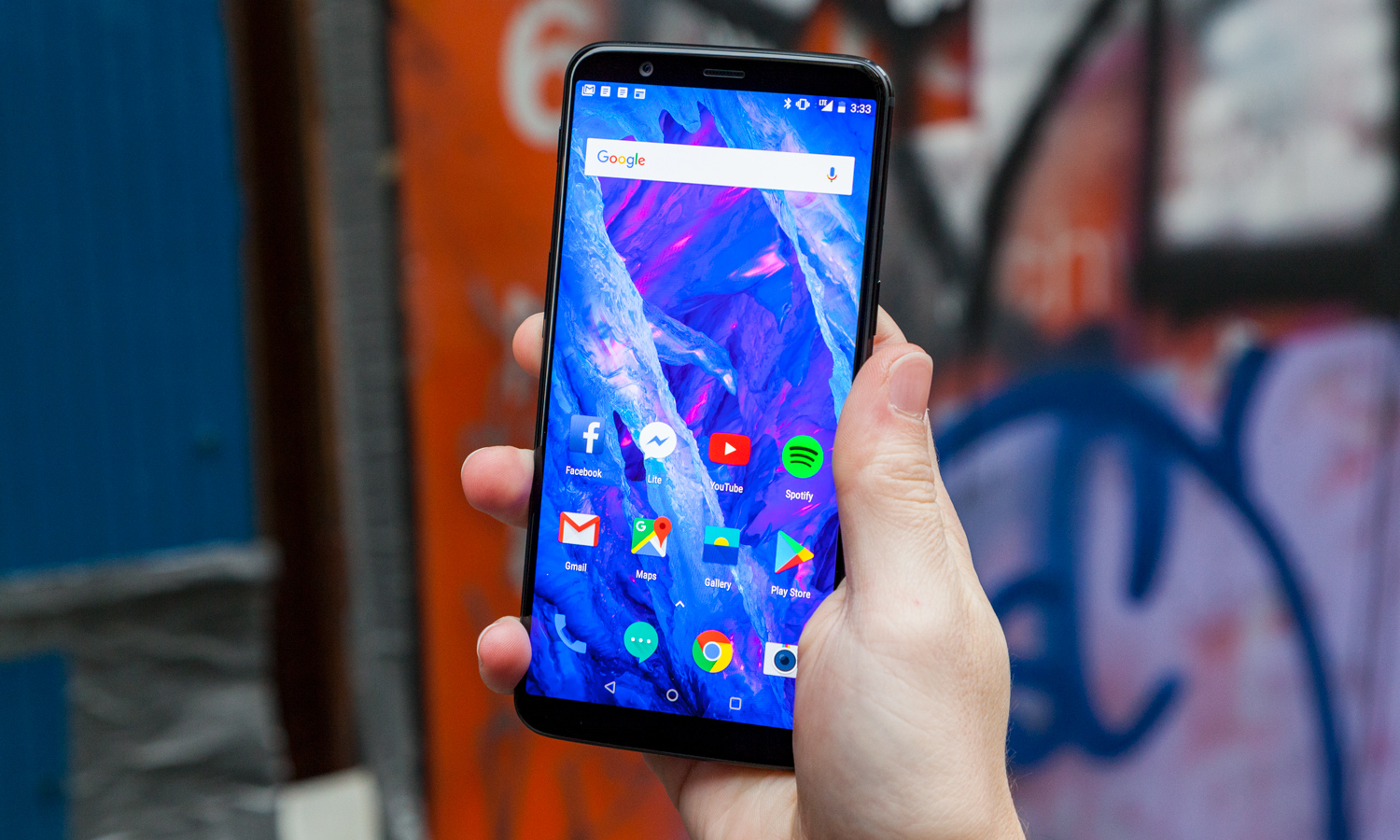
The 2160 x 1080 AMOLED panel in the OnePlus 5T was able to re-create 218 percent of the sRGB color space, handily defeating the Essential's 159 percent. However, the Essential Phone claimed a superior full-screen brightness of 556 nits, compared to 394 for the 5T.
Essential also edged out OnePlus in color accuracy, with a Delta-E score of 0.28 compared to 0.47. (Numbers closer to 0 are better.) The Essential Phone doesn't offer any color-calibration options, while the 5T offers several. Default was used for this test, but if you'd rather have less-saturated hues, there are options for sRGB and DCI-P3 as well.
Ultimately both are great screens, but the 5T gets the win for its expanded color range befitting of an OLED panel, as well as its selection of display profiles that lets users tune on-screen content to their liking.
Winner: OnePlus 5T
Cameras
Dual cameras adorn the backs of the Essential Phone and OnePlus 5T, though the shooters behave quite differently in practice.
The Essential Phone doubles up on f/1.9 13-megapixel sensors, the difference being that one shoots in RGB, while the other is just monochrome. The theory is, the monochrome sensor can simply concentrate on luminance, improving low-light shots while reducing unsightly noise.
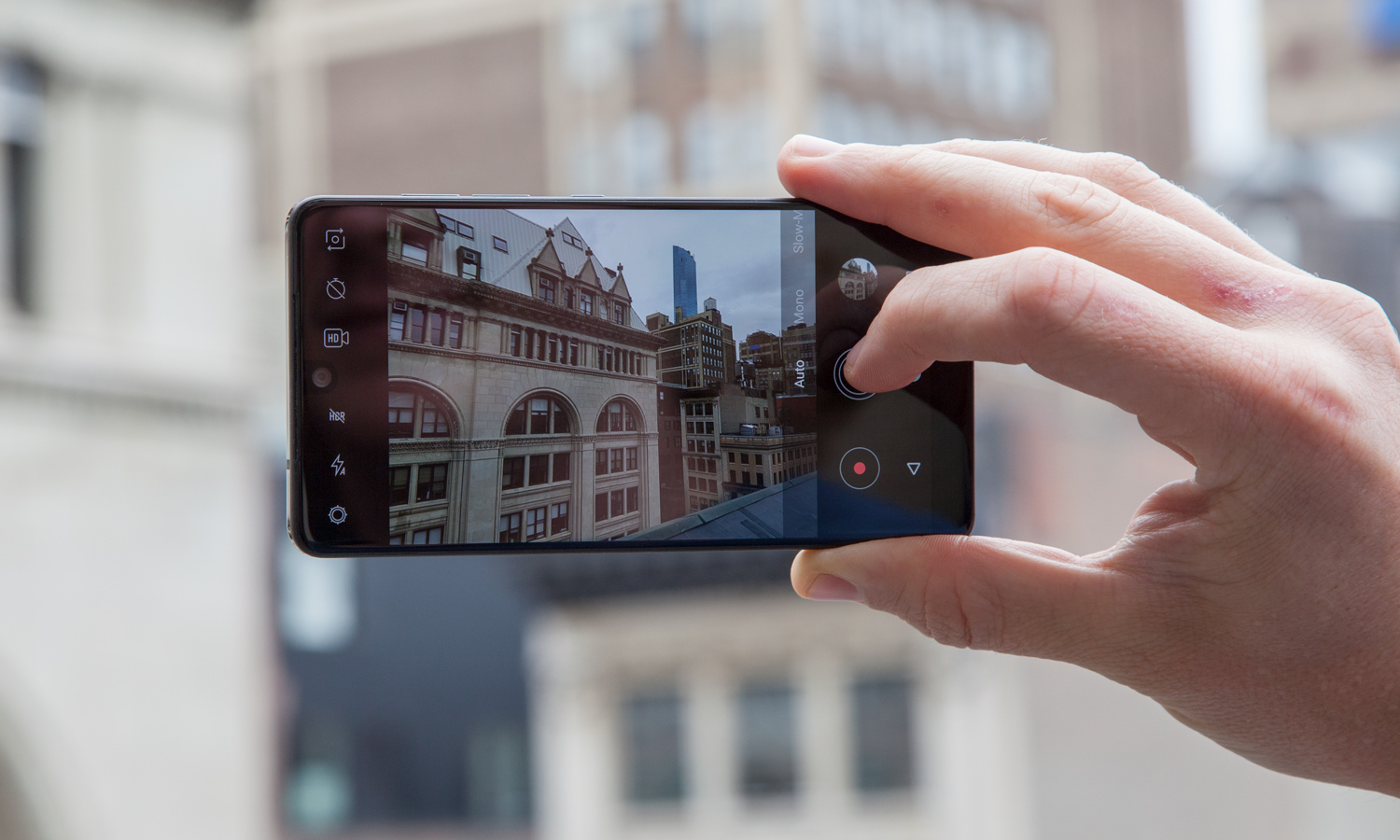
OnePlus, on the other hand, opts for a more conventional setup with the 5T. Both the 16-MP primary lens and 20-MP secondary one utilize an f/1.7 aperture, but the latter is geared for low light, thanks to something OnePlus is calling Intelligent Pixel Technology. This system bundles image sensor pixels when brightness falls below a certain threshold, making them larger, to allow more light in.
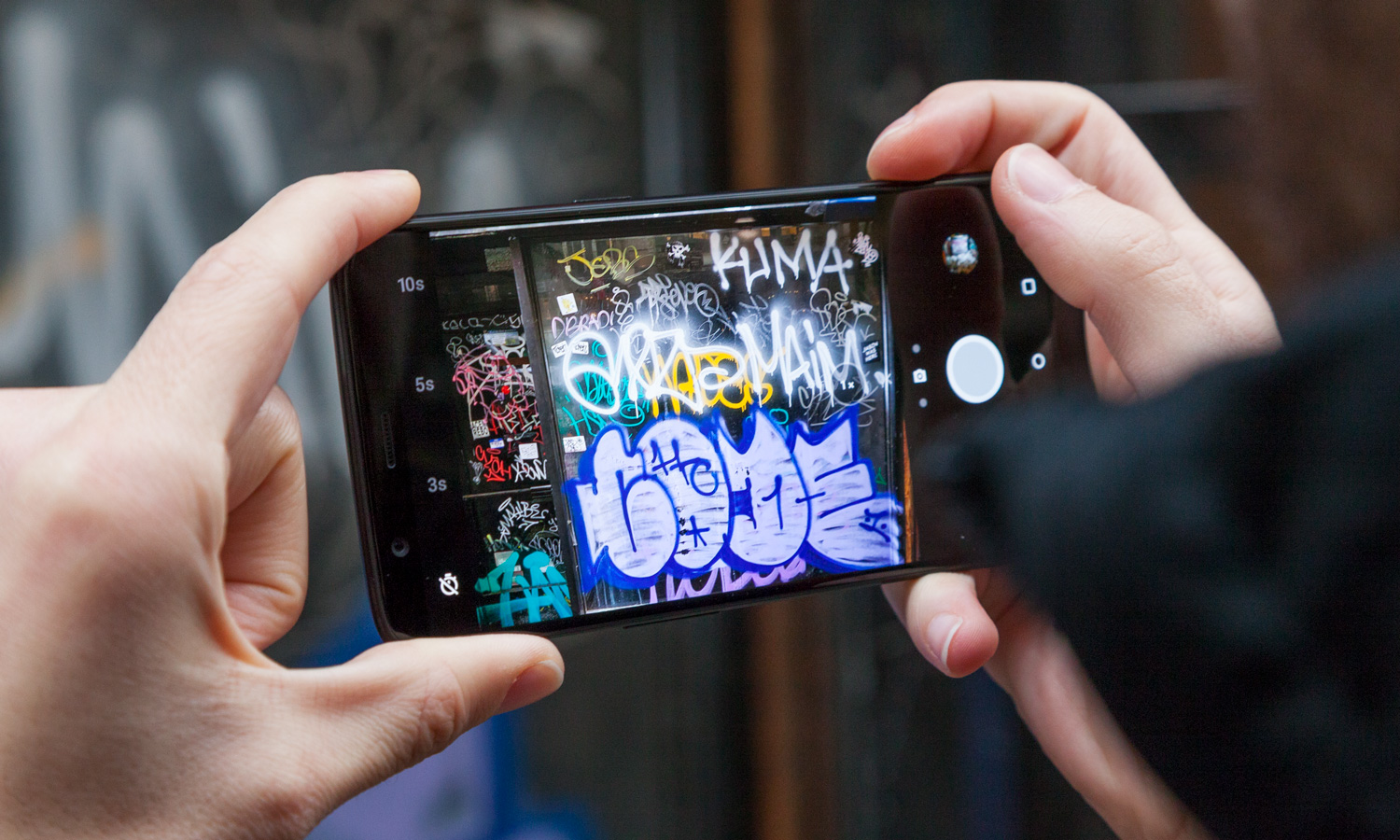
Interestingly, even though both phones make use of dual cameras, only the OnePlus 5T is capable of short-depth-of-field Portrait Mode photography. Meanwhile, the Essential can shoot in true black and white exclusively with that monochrome sensor, like Motorola and Huawei's flagships can do.
For the first comparison, I took to the roof of our office in New York to capture a pair of late-afternoon skyline shots. HDR mode was used for both, but it's only really noticeable in the OnePlus 5T's photo, which comes across almost cartoonishly bright and oversaturated. The Essential's rendition is rather dim and muted by comparison, though I prefer the way it reins in the highlights for more clarity in the center of the frame. However, the 5T better exposed the darker regions, like the hedge at the bottom.
When I tested the phones' low-light capabilities indoors, the Essential Phone produced a shot that was overwhelmingly brighter, but also more washed out. The OnePlus 5T delivered more sharpness and color, especially in the wood grain of the desk and the greens in the fake plant.
Finally, when it came to selfies, there was no contest. The OnePlus 5T's 16-MP front-facing camera stole the show here, with a crispness and more-realistic white balance that the Essential Phone's 8-MP sensor could not match. The latter looks remarkably blurry by comparison.
Ultimately, the OnePlus boasts the more consistently impressive camera of the two, along with a far more extensive feature set. In the 5T's camera app, you'll find a Pro mode, as well as the ability to take portraits, time lapses, panoramas and slow-motion video. The Essential Phone is under-equipped by comparison, featuring options only for monochrome and slow-motion recording.
Winner: OnePlus 5T
Performance
Powering both the Essential Phone and OnePlus 5T is Qualcomm's Snapdragon 835 chipset, though the devices differ in RAM and storage.
The Essential is available in only one configuration, with 4GB of RAM and 128GB of space for media and files. The OnePlus 5T comes with 6GB of RAM and 64GB of storage standard; for an extra $60, customers can bump that up to 8GB and 128GB.
That means you get more storage for less with the Essential Phone, but both models of the OnePlus 5T guarantee more RAM for better multitasking. Not surprisingly, it was the OnePlus that held the edge in the benchmarks.
MORE: Best Cheap Unlocked Smartphones
During testing in Geekbench 4, which measures overall system performance, our 8GB OnePlus 5T outshined not only the Essential Phone, but also both the Samsung Galaxy S8 and Note 8, with a score of 6,674. By comparison, the Essential Phone slid in at just 5,960. The OnePlus 5T also edged out the competition in our video transcoding test, converting a brief 4K clip into 1080p in 3 minutes and 20 seconds using the mobile Adobe Premiere app, compared to 3:48 for the Essential Phone.
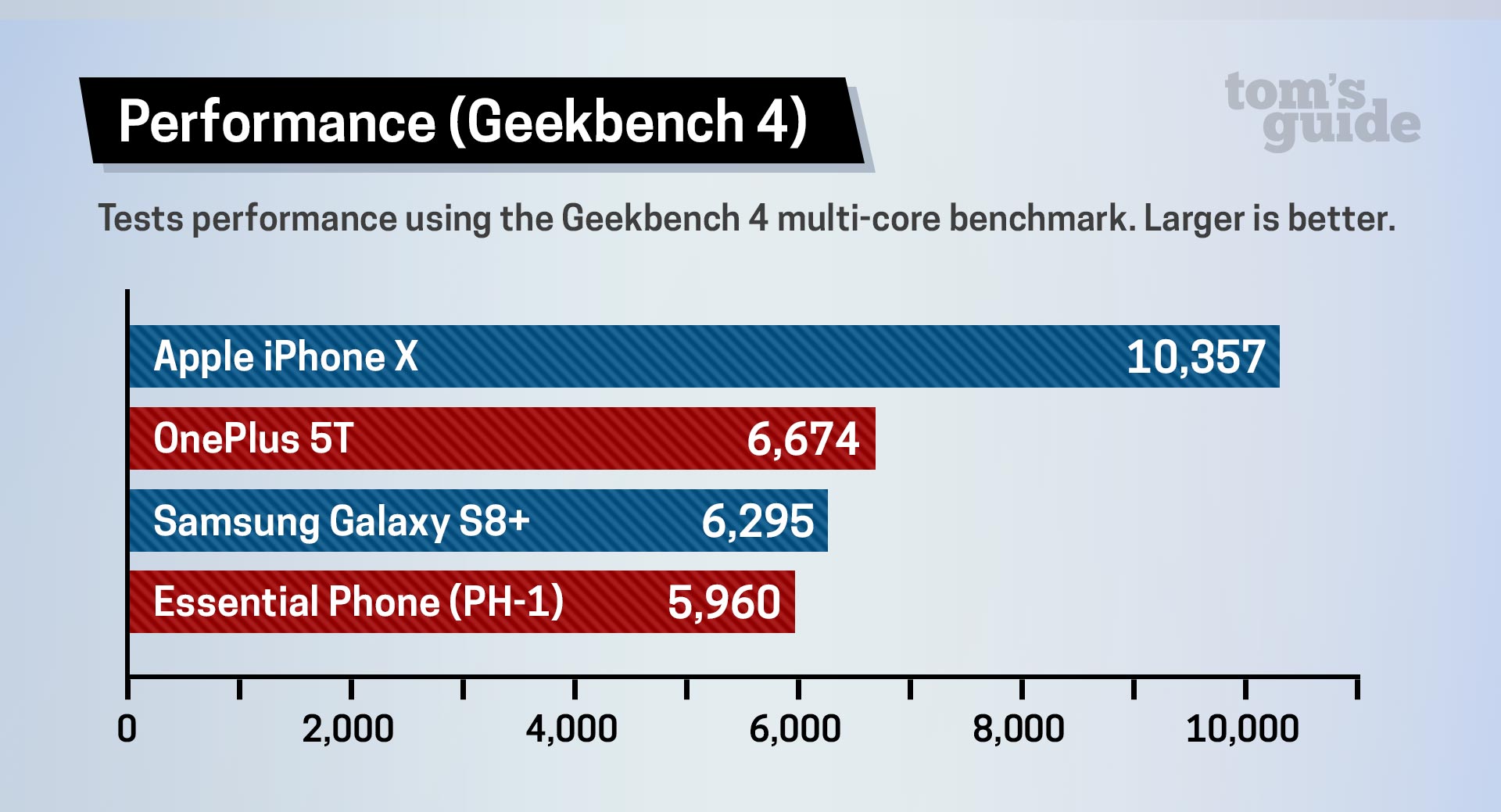
The OnePlus proved to be the slightly smoother and more consistent of the two phones in day-to-day usage. The Essential Phone was criticized at launch for occasionally buggy behavior, and while a series of updates have mostly stamped out those issues, some remain, like lag in the camera app when snapping a picture or viewing the gallery.
Winner: OnePlus 5T
Software and Special Features
If you prefer stock Android, you're in luck; both of these devices opt for a very light touch on 7.1.1 Nougat. The Essential Phone in particular is as vanilla as it gets, with the only manufacturer-specific content coming in the form of bespoke camera software. It's astonishing how short the Essential Phone's app list is the first time you boot the device up.
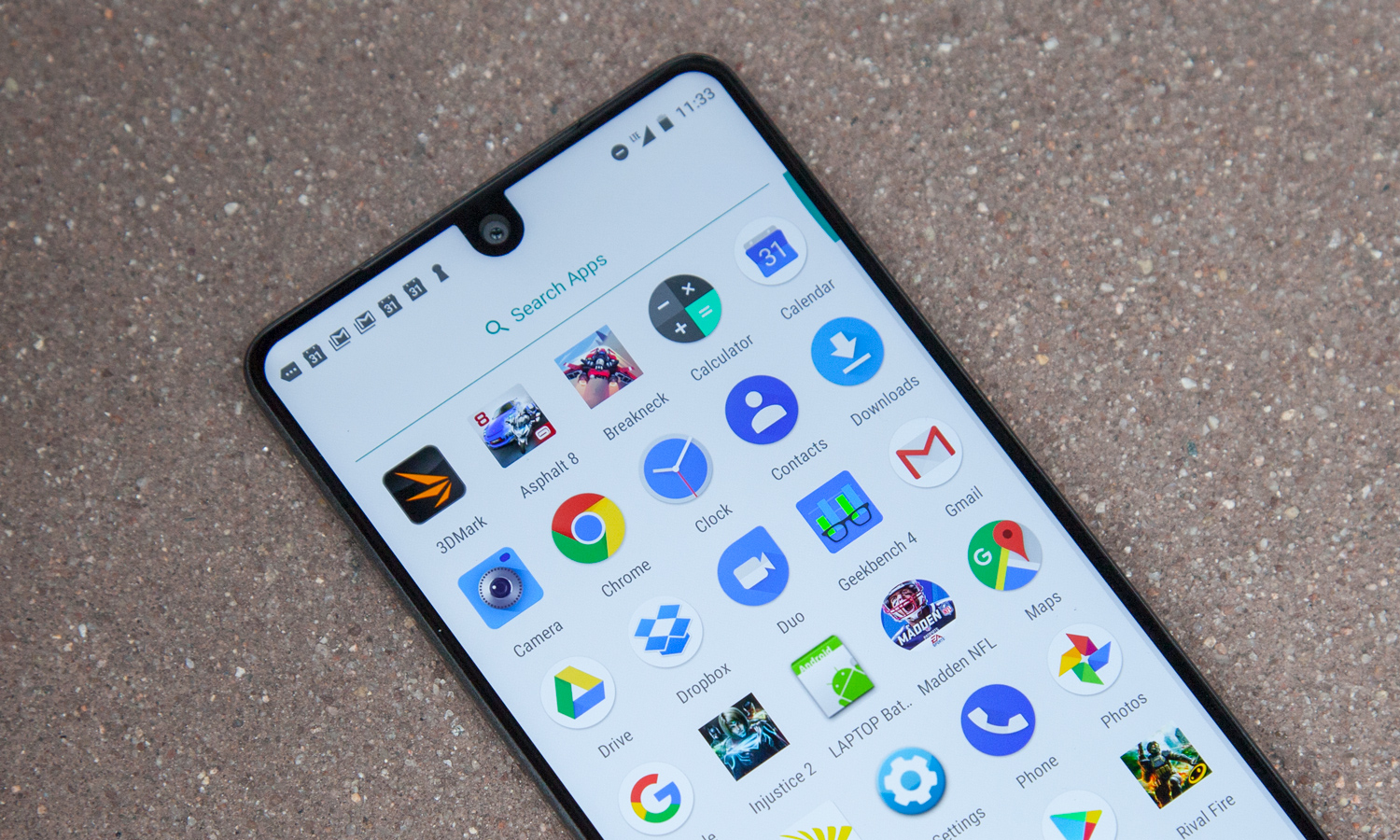
The OnePlus 5T isn't significantly different, though the company has added its OxygenOS layer, which brings a few exclusive features. These include a Reading Mode that turns on-screen content to gray scale for easier visibility, faster facial recognition for unlocking, custom gestures for shortcuts and a gaming-specific Do Not Disturb mode.
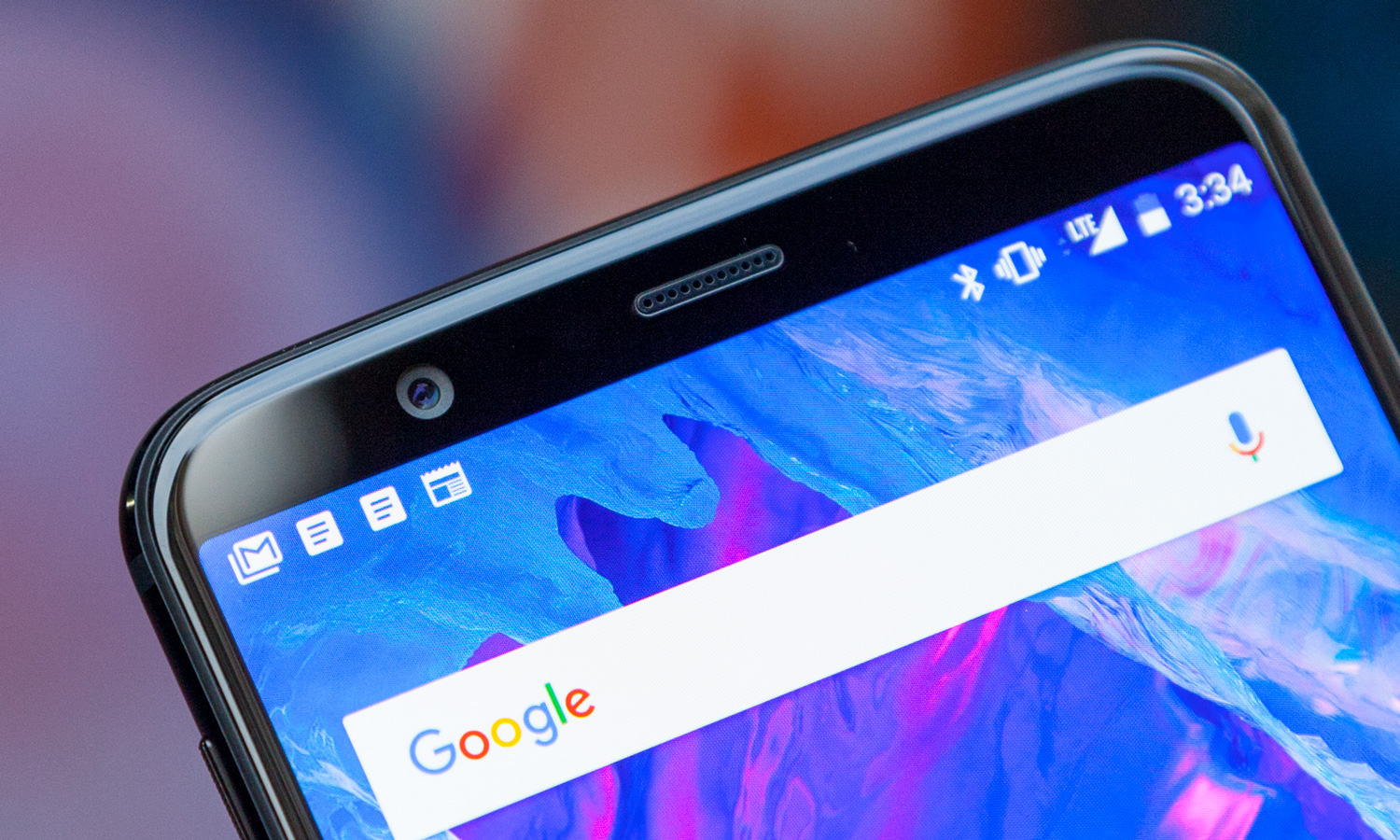
MORE: Android Tips to Unlock Your Phone's Full Potential
OnePlus' modifications are modest but useful. While Essential hasn't taken the same approach with its software, the company has given its phone a pair of magnetic pins designed to support modular components, like the company's own 360-degree camera. That camera is still the only add-on available, though, and at nearly four full months since the device's release, there's no indication Essential is planning to expand the range.
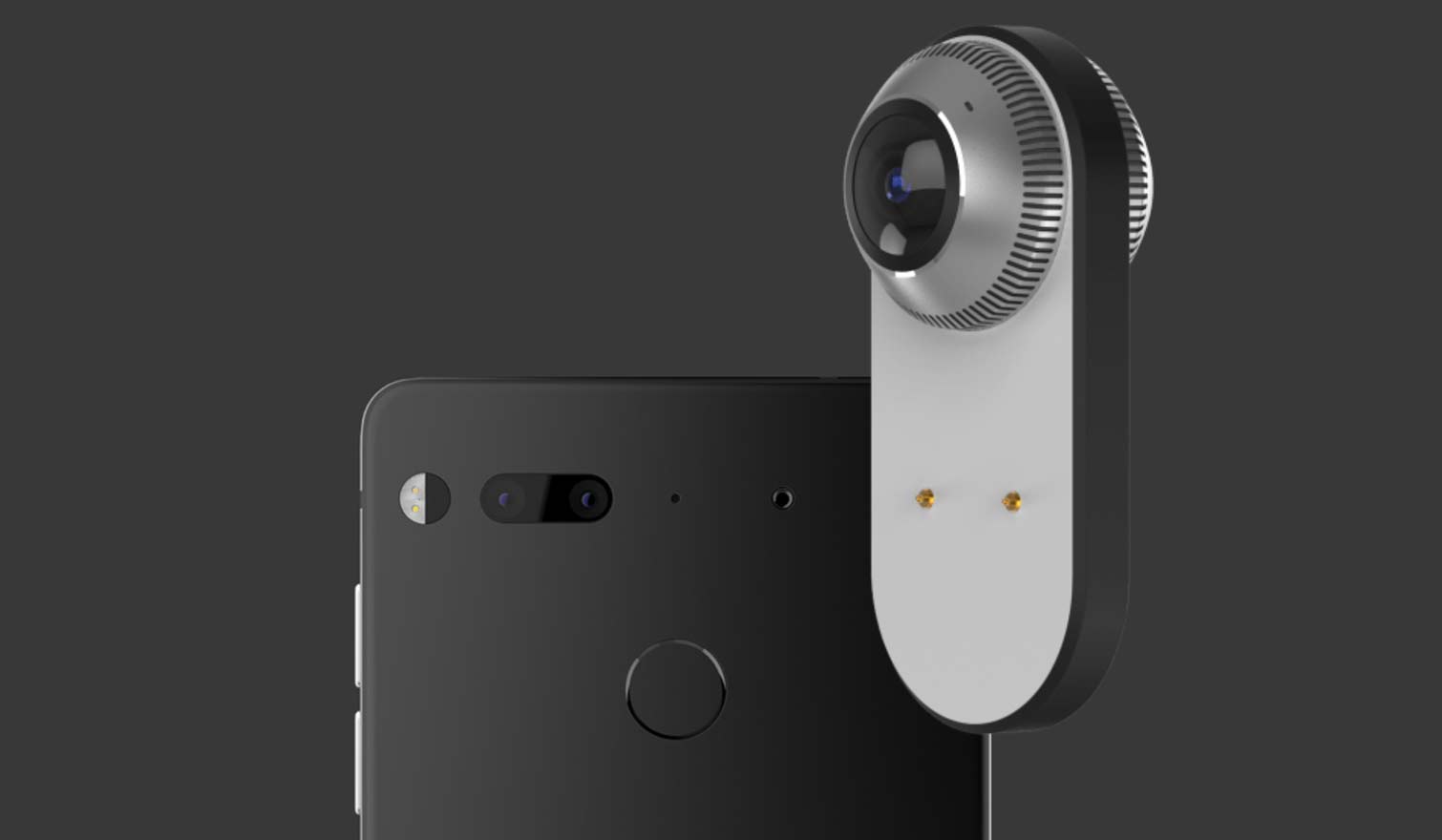
As far as updates are concerned, both phone makers are currently rolling out betas for Android 8.0 Oreo, with public releases expected to drop in early 2018. The industry's adoption of Oreo has been remarkably slow overall, so these are encouraging signs for the future of both devices.
Winner: OnePlus 5T
Battery and Charging
On paper, you'd expect the Essential Phone's 3,040-mAh battery to keep the device humming through the day. Unfortunately, our unit delivered a little more than 8 hours of endless web surfing over LTE, well short of the 9-hour, 40-minute smartphone average in our testing. This testing was performed on Sprint's network.
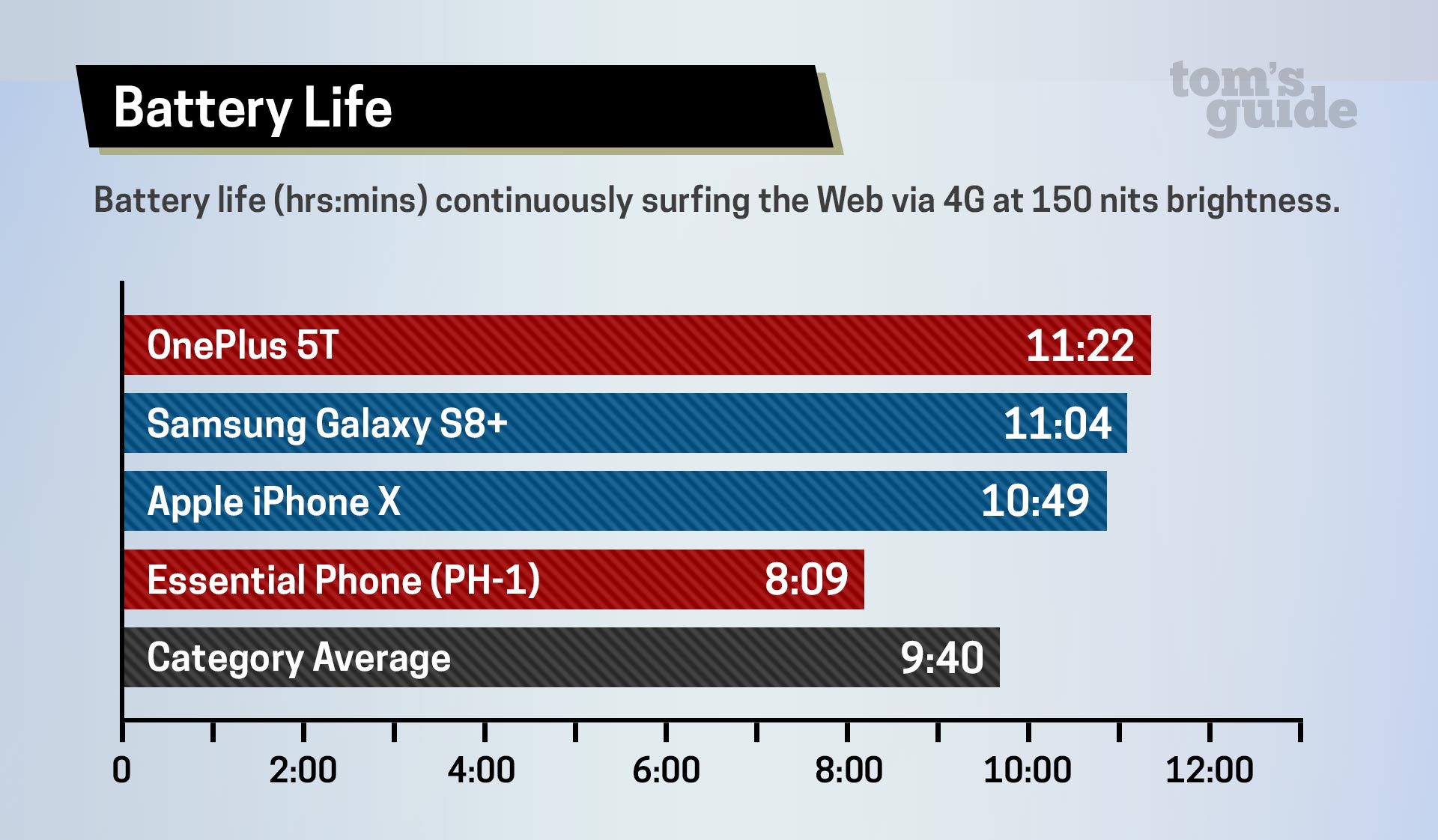
The OnePlus 5T, conversely, proved to be one of the longest-lasting flagships we've tested this year. At 11 hours and 22 minutes, the 5T delivered longevity right up there with class leaders, such as the Pixel 2 XL, iPhone 8 Plus and Galaxy Note 8. We tested the OnePlus 5T on T-Mobile.
At the moment, neither of these devices natively supports wireless charging. However, Essential teased a proprietary dock long ago that replenishes its phone via those magnetic pins. But that accessory has not been released.
Winner: OnePlus 5T
Value and Availability
Although both phones now start at just $499 (the Essential initially retailed for $699), you'll need to be careful about which you buy. That's because the OnePlus 5T is a GSM-only device, meaning it won't work on CDMA carriers like Verizon, Sprint or Boost Mobile.
MORE: The Best Cheap Unlocked Smartphones
The Essential Phone is different. Because it is compatible with both GSM and CDMA networks, you can buy an unlocked model and take it to any carrier. There's also a version of the Essential Phone sold directly through Sprint. Meanwhile, the OnePlus 5T is only available unlocked, with no carrier vendors.
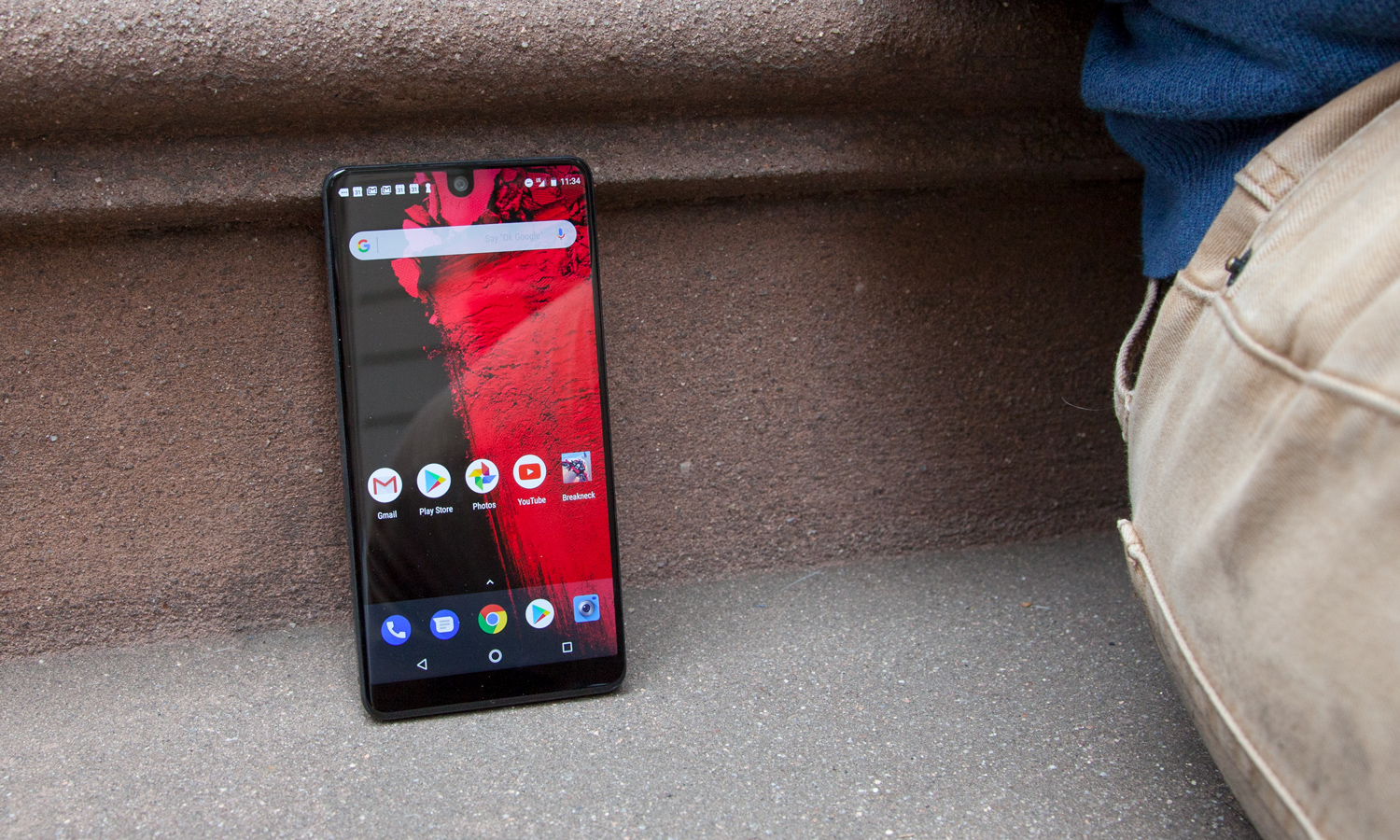
If you can afford to spend a little more, OnePlus sells a version of the 5T for $559 that bumps up RAM and storage to 8GB and 128GB, respectively. That's twice the RAM of the Essential Phone, but the same capacity for media.
Winner: Tie
Overall Winner: OnePlus 5T
| Row 0 - Cell 0 | Essential Phone | OnePlus 5T |
| Design (10) | 9 | 7 |
| Display (15) | 10 | 12 |
| Cameras (20) | 10 | 14 |
| Performance (10) | 7 | 9 |
| Software and Special Features (10) | 7 | 8 |
| Battery and Charging (20) | 10 | 17 |
| Value and Availability (15) | 14 | 12 |
| Overall (100) | 67 | 79 |
Provided you're on a carrier that can support it, the OnePlus 5T takes the crown as the better budget flagship. For $500, owners get performance on par with Samsung's and Google's best handsets, alongside a fast-charging and long-lasting battery and a swift and elegant user interface.
The Essential Phone also offers a lot for the money, but outside of this device's gorgeous design, the execution falls short. The camera is underwhelming for a flagship, and the insufficient battery life dooms this phone in this comparison. It's not a bad phone by any means, and it's certainly a compelling value now that Essential has slashed the price down from the original $699. But when the competition is this strong, the answer is pretty clear.
Credit: Tom's Guide
Sign up to get the BEST of Tom's Guide direct to your inbox.
Get instant access to breaking news, the hottest reviews, great deals and helpful tips.
Adam Ismail is a staff writer at Jalopnik and previously worked on Tom's Guide covering smartphones, car tech and gaming. His love for all things mobile began with the original Motorola Droid; since then he’s owned a variety of Android and iOS-powered handsets, refusing to stay loyal to one platform. His work has also appeared on Digital Trends and GTPlanet. When he’s not fiddling with the latest devices, he’s at an indie pop show, recording a podcast or playing Sega Dreamcast.
-
jmarsella72 Forgot, they didn't mention the recent ota for portrait mode on essential? It actually works well. And since that update occurred a month ago there have been two additional updates to the camera. I think the OnePlus is still probably better because they have manual mode but the Gap is being closed at a rapid pace. This writer should have included this feature since the story was rraleased 1 month after the portrait ota.Reply -
jmarsella72 I think considering it took OnePlus 4 phones to get the camera right I'm not surprised it won. But I think the display on the essential is better. Here's one thing essential does better and this is huuuuuuuugggggeeee us better customer service and it's patching. I'm always reading OnePlus is horrible at it. If there is an issue they never address it right away. I can say from experience that essential is in the ball in that regard. I've received I think like 10 camera updates since Sept. 10!! I know the camera needed it but they are hammering it out and seem relentless on getting it right. That is, is my opinion, is what makes essential better. I love the updates. Huawei, Sammy, lg, never ever do updates. Whatever you get is basically what you have until you buy another phone. Now those phones are def more polished but for the money I would take OnePlus or essential any day of the week over the bigger companies.Reply -
Russell Mezger With display I don't think the higher resolution of the Essential is given enough credit. A 1080p screen in 2017 is pretty week.Reply
